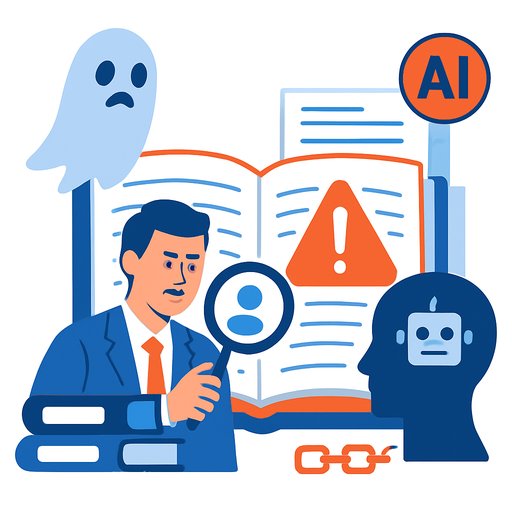AI didn't take the weekend off: The research-first briefing for November 22, 2025
AI is steering chip markets, stirring lawmakers, entering classrooms, contesting insurance denials, and powering fresh science - all at once. If your work depends on compute, methods, or data policy, this is the signal you need.
1) Chips and hardware: record demand, new alliances, smarter utilization
Nvidia logged a staggering $57B in quarterly sales on data-center demand. The bump eased bubble fears for a moment, then markets snapped back to: is this durable growth or overshoot? AI capex has already padded U.S. GDP by an estimated 0.5 percentage points in H1 2025 - but skeptics note revenue from deployed AI still trails the hardware bill.
- Lab reality: plan for scarcity pockets and shorter hardware cycles. Budget for swapping architectures faster than past HPC norms.
- Risk posture: watch for overcapacity scenarios in 2026-2027; negotiate flexible procurement and resale clauses.
Hon Hai (Foxconn) and OpenAI outlined a U.S. build for AI infrastructure components: R&D in San Jose, production in Ohio. The focus is data-center parts and cooling tuned for large models. OpenAI gets evaluation rights without purchase obligations. Hon Hai also plans a GB300-powered facility in Taiwan by mid-2026 - a bet on end-to-end manufacturing from Midwest to East Asia.
- What matters: shorter, domestic supply paths for racks, cooling, and serviceable parts. This could ease lead times and repairs for U.S. sites.
Huawei introduced Flex:ai, an open-source orchestration layer that slices accelerators into virtual units and schedules jobs with Kubernetes. Claimed utilization gains: ~30%. It's a software answer to tight chip supply and export limits.
- Action for R&D: evaluate GPU/NPU partitioning and preemption to boost throughput; align with your data security model before multi-tenant sharing.
Even tin is moving. Analyses show prices stabilizing and ticking up as AI data-center buildout meets tighter supply. Solder and advanced packaging depend on it. Expect more "boring" materials to become strategic constraints.
2) Policy: preemption fight in the U.S., EU delays high-risk rules
On Capitol Hill, a bid to block most state AI laws - by folding preemption into the NDAA - is faltering. Lawmakers in both parties are balking at sidelining state rules on deepfakes, automated decisions, and online safety. A draft executive order that hinted at pressure tactics on states appears shelved.
- For research teams: state compliance still matters. Track consent, bias, and model accountability at the state level for 2025 deployments.
The EU proposed pushing enforcement of "high-risk" AI rules to December 2027 and floated privacy tweaks that could widen data use for model training under conditions. Officials claim simplification without loosening; critics see drift.
- If you process EU personal data: revisit your lawful basis and documentation. Plan for audits and dataset provenance checks ahead of 2027.
- Background: see the European Commission's AI policy overview here.
3) Kids and classrooms: practical guardrails vs. rollout speed
Advocacy groups are warning parents off general-purpose chatbot toys for younger children. Reports cite unsafe content, weak parental controls, and concern over displaced imaginative play. Toy makers point to filters and dashboards; experts still recommend low-tech options for early development.
Greece is piloting ChatGPT Edu in 20 secondary schools this week, training staff for lesson planning, research, and tutoring ahead of a national rollout. Older students may get monitored access next spring. The tension: prepare students for AI-heavy work while protecting creativity and limiting screen creep.
- Research note: treat classrooms as quasi-clinical settings - document learning outcomes, bias, and failure cases; involve ethics boards when student data is logged.
4) Health: "AI vs. AI" in claims - and a new mental-health institute
Patients are using AI tools to challenge automated insurance denials. Services analyze policy language, denial letters, and medical literature to draft appeals. This trend won't fix care, but it levels the paperwork field and demands stronger audit trails from payers.
- For informatics teams: assume your automated decisions will meet automated appeals. Preserve reasoning metadata and enable human review for high-stakes calls.
Brown University launched a $20M, five-year NSF institute (ARIA) focused on AI assistants in mental and behavioral health - safety, interpretability, adaptation, and participatory design are core pillars. Researchers are even exploring independent trust scores for mental-health AI.
- Funding signal: mental-health AI with rigorous evaluation is a priority area. NSF's broader AI Institutes program details are here.
5) Frontiers: galaxy-scale sims and gesture-first robotics
RIKEN scientists built a "digital twin" of the Milky Way by pairing high-fidelity physics for supernovae with a learned surrogate that predicts long-tail gas dynamics. The surrogate handles ultra-fast microphysics so the main model can track 100B stars over 10,000 years without decades of compute.
- Method takeaway: couple trusted solvers with domain-specific surrogates; validate on edge cases and bound errors before scaling.
UC San Diego unveiled a soft, wearable forearm patch with stretchable sensors and an on-device model trained on noisy motion. It filters chaos (running, waves, shaking) to read gestures and control robots in real time.
- Use cases to explore: assistive robotics, industrial operations, underwater systems. For labs, this is a clean testbed for robust sensing and on-edge inference.
What this means for the next 6-12 months
- Compute scarcity will ease unevenly. Virtualization and smarter scheduling may yield faster wins than waiting on new GPUs.
- Policy fragmentation is sticking around. Treat state rules and EU timelines as real constraints in 2025-2027 planning.
- AI is now basic infrastructure for research. Budget for power, cooling, and retraining - not just chips.
- Surrogate modeling is moving from niche to norm. Climate, fluids, and materials projects can borrow the Milky Way playbook.
- Human oversight matters. Health, education, and safety use cases need transparent decision trails and opt-outs.
Practical steps for research teams
- Benchmark utilization before buying more hardware; pilot GPU/NPU partitioning and preemption.
- Stand up a data governance checklist: consent, provenance, model cards, and audit logs tied to decisions.
- Add surrogate-model validation to your methods playbook: OOD tests, uncertainty estimates, and ablations.
- For classroom or clinical pilots, pre-register outcomes and publish failure modes, not just wins.
If your group is leveling up AI skills across domains, see curated training paths for research roles at Complete AI Training - courses by job. For fresh releases and updates, check latest AI courses.
Your membership also unlocks:






